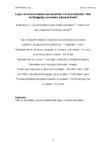Use este identificador para citar ou linkar para este item:
http://www.alice.cnptia.embrapa.br/alice/handle/doc/965468Registro completo de metadados
| Campo DC | Valor | Idioma |
|---|---|---|
| dc.contributor.author | GINON, E. | pt_BR |
| dc.contributor.author | LABOISSIÈRE, L. H. E. dos S. | pt_BR |
| dc.contributor.author | ARES, G. | pt_BR |
| dc.contributor.author | ISSANCHOU, S. | pt_BR |
| dc.contributor.author | DELIZA, R. | pt_BR |
| dc.date.accessioned | 2013-09-03T11:11:11Z | pt_BR |
| dc.date.available | 2013-09-03T11:11:11Z | pt_BR |
| dc.date.created | 2013-09-03 | pt_BR |
| dc.date.issued | 2013 | pt_BR |
| dc.identifier.citation | In: EAAE SEMINAR, 134., 2013, Paris. Labels on sustainability: an issue for consumers, producers, policy makers, and NGOs. Paris: INRA, 2013. | pt_BR |
| dc.identifier.uri | http://www.alice.cnptia.embrapa.br/alice/handle/doc/965468 | pt_BR |
| dc.description | Logos on environmental sustainability could consist of an effective strategy to provide consumers accurate, understandable and trustable information in order to encourage them to buy environmentally sustainable wine. However, the large number of different logos on environmental sustainability available in the market raises the question of whether their associated messages are successfully conveyed to consumers. In this context, the aim of the present exploratory study was to investigate how Burgundy wine consumers perceive a series of logos on environmental sustainability in wine production. Fourteen logos available in the French market were selected: three logos being specific to wine and eleven non-specific to wine. The logos were presented to 127 wine consumers from Dijon area (France) following an incomplete balanced block design. For each logo, participants had to answer the question: ?What does a bottle of wine with this logo suggest you?? Responses were qualitatively analyzed and grouped into different categories. Chi-square test and Correspondence analysis were used to identify the relationship among logos and categories. Results showed large differences in how consumers perceived the logos. Logos that most successfully conveyed their messages were Biodyvin, the ancient European AB and the French AB organic logos, which were strongly associated to organic wine. Most logos did not communicate a message related to environmental sustainability, which reaffirms the need to provide consumers with adequate information on environmental sustainability, and indicate the need for further research on this subject. | pt_BR |
| dc.language.iso | eng | eng |
| dc.rights | openAccess | eng |
| dc.subject | Sustentabilidade | pt_BR |
| dc.subject | Percepção do consumidor | pt_BR |
| dc.title | Logos on environmental sustainability in wine production: how do Burgundy consumers perceive them? | pt_BR |
| dc.type | Artigo em anais e proceedings | pt_BR |
| dc.date.updated | 2013-09-03T11:11:11Z | pt_BR |
| dc.subject.thesagro | Vinho | pt_BR |
| riaa.ainfo.id | 965468 | pt_BR |
| riaa.ainfo.lastupdate | 2013-09-03 | pt_BR |
| dc.contributor.institution | EMILIE GINON, BURGUNDY SCHOOL OF BUSINESS; LUCIA HELENA ESTEVES DOS SANTOS LABOISSIÈRE, UFMG; GASTÓN ARES, UNIVERSIDAD DE LA REPUBLICA, MONTEVIDEO; SYLVIE ISSANCHOU, INRA; ROSIRES DELIZA, CTAA. | pt_BR |
| Aparece nas coleções: | Artigo em anais de congresso (CTAA)  | |
Arquivos associados a este item:
| Arquivo | Descrição | Tamanho | Formato | |
|---|---|---|---|---|
| 2013063.pdf | 138.28 kB | Adobe PDF |  Visualizar/Abrir |









